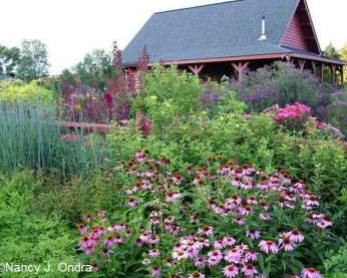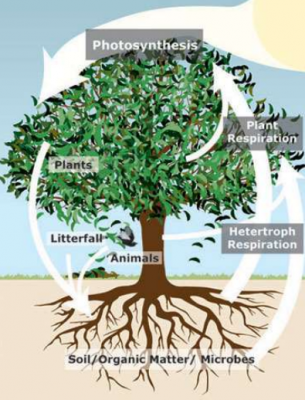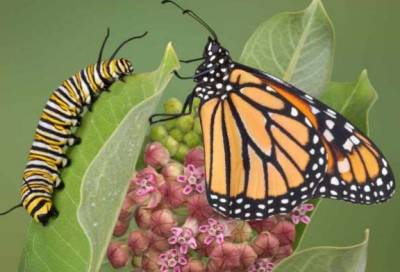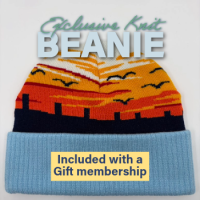MOREHEAD CITY – While you can order online and have just about any plant or seedling from anywhere in the world delivered to your door, it’s best to stick to native plants for a healthy landscape and ecosystem.
The first step in that plan is to define what a native plant is, says Charlotte Glen, state coordinator for the North Carolina Extension Master Gardener Program.
Supporter Spotlight

Glen explained recently during an event at the Crystal Coast Civic Center, “Native Plants in NC Landscaping: Tips for Success and Top Picks for Coastal Landscapes,” hosted by the Carteret County Cooperative Extension Master Gardener Volunteer Association, that there is a range of definitions, with one as simple as anything that grew in North America before European settlers.
But she prefers this definition from “The Living Landscape” by Rick Dark and Doug Tallamy: “A plant or animal that has evolved in a given place, over a period of time, sufficient to develop complex and essential relationships with the physical environment and other organisms in a given ecological community.”
Glen, an extension agent in the state since 2000, working in Pender and New Hanover counties before moving to the Raleigh area, acknowledged that definition includes a lot of parts, “and it really does start with that given place.”
“If something is native in the mountains of North Carolina, it most likely is not going to be really happy here at the coast, and vice versa,” she said. “To really use native plants, you have to start with ‘native to where?’”
North America is divided into ecoregions with Morehead City being in the Middle Atlantic Coastal Plain, Level III.
Supporter Spotlight
“You’re probably going to see the greatest benefit from the plants from your exact ecoregion, but that doesn’t mean plants from further south, from similar ecoregions, won’t also do well,” she said.

Research has shown that when you have closely related species, most pollinators can feed as equally well on one another. “Those are called congeners. If we have a species of that plant here and there’s a similar species in another part of the Southeast, you’re probably going to get similar benefits.”
Plant maps are available on the U.S. Department of Agriculture plants database website.
“Beyond just these maps and ranges, when you’re looking at native plants, you definitely want to pay attention to what kind of conditions they grow in because that’s going to be the real key to choosing the right plants for your yard,” she said.
Glen suggested doing a little bit of extra research beyond asking “does it grow in my area?” Find out what kind of conditions the plant likes, such as its tolerance for shade or sun, or well-drained or poorly drained soil.
Why do we want to include natives? “That really gets to the other part of that definition where we talk about those plants that have been here for a significant amount of time, and they’ve developed these complex and essential relationships,” Glen said.
She said that when ecosystems or environments are healthy, nature provides a lot of services that often aren’t thought about until they’re in jeopardy.

“One thing right now that people are paying attention to is pollination. As bee populations decline, we’re realizing that’s making a big difference not only in home gardens but in vegetable production,” she said.
Plants play a big part in the ecosystem, as well. Plant roots protect the soil from erosion, plants help cycle nutrients that are then distributed through the food chain, help cycle water and support beneficial microbes in the soil that help all things grow.
“The most important function of plants is back to the food web,” she said. “If you don’t have the insects and spiders that the toads and the birds rely on, then you don’t keep growing that food chain for other creatures further up.”
Glen added that plants also capture the sun’s energy. “So, they’re converting that energy of the sun into a form that’s accessible by everything else in the food chain, including us.”
Another reason plants native to the region are needed is to support the insects and the other animals there.
One of the best-known examples between animals – an insect specifically – and plants are monarch butterflies, Glen explained. The monarch butterflies need to lay their eggs on butterfly weed or milkweed because if they lay their eggs on any other type of plant, the caterpillar will hatch but won’t survive on that plant. Butterflies find the right plants by tasting them with their feet, where they have their taste buds.
“When you see butterflies flitting around, landing on plant after plant, they’re tasting them to see if it’s the right plant to put their eggs on,” she said.
“There’s many other examples of insects and animals that are really specialized … by adding some of those plants to your landscape, you can help those local populations.”
Glen added though that not all plants have to be natives, just increasing natives makes a difference. As long as it doesn’t have invasive tendencies, it’s fine to have both natives and non-natives in landscapes.
Another factor to keep in mind with native plants is just because it naturally grows in the area doesn’t mean that it’s naturally going to grow and be happy in every yard or landscape situation.

She said it’s vital to make sure the plant is in its optimal drainage situation because it’s more critical to the plant’s survival than sun or shade. While sun or shade conditions can be corrected – the plant can be moved — if a plant that needs good drainage is in a wet area, that plant could be dead in just a few days.
Gardeners will still need to follow best management practices such as preparing and cultivating the soil and once the plants are in the ground, they’ll still need to be watered to get established and mulch to help hold moisture. “Everything you do for growing other plants applies for natives.”
Additionally, Glen said to make sure the space you’re using has room for the plant to grow; not try to fit a plant into a space that’s too small.
“The question I often get asked about native plants is what about cultivars or cultivated varieties? Is that the same as growing native plants?” Glen said. “There’s not a definitive answer.”
There is a lot of research going on with cultivars and if the cultivar is too different from the wild form, pollinators are not as likely to visit as much, such as if the blooming time is different.
“So, it’s ok to use cultivars as an accent point but we still want to preserve some of the natural as well,” she said.
“If you’re really trying to get the most benefit, especially for wildlife from natives, you want to look at ecological design principles,” Glen explained, adding having low diversity in a yard isn’t going to sustain a lot of diversity of species other than the pests that feed on turf.
“If you want to have more butterflies, more pollinators, more songbirds, you need to look at having a wide range of plants, things that bloom at different times of year at different heights and planting them throughout the yard to support those many different types of species,” she said. “You also want to think about the vertical structure of the landscape. You’ll find that different birds, different insects have a preferred range where they feed and where they live.”
She explained some species like to stay low to the ground while others prefer to be a little higher up.
When looking at vertical layers for landscaping, include canopy trees, understory plants and perennials, the lower-growing plant.
Canopy trees are essential for providing foliage for insects to feed, that in turn feed the birds, provide shade, protect the soil and provide other resources. Understory trees and shrubs, the next layer down, she said, is a critical layer for nesting birds. “This is going to be their prime habitat area.”

Glen said in a lot of landscapes the understory plants tend to be the missing element.
“This is one to put a little more emphasis in, or think about when you’re thinking about the structure of your landscape and do you need to bring more of these plants in. A lot of these plants have nice flowers, really attractive features or fruits, that not only look nice in landscape but provide some really important resources for wildlife,” she added.
And for the lower growing plants, perennials are wonderful for making up that ground layer and providing essential resources for pollinators.
“What you’ll find is a lot of our perennials that are best for pollinators are ones that have lots of little flowers packed together. Because each one of those individual flowers is a pot of nectar. So, they can sit there and forage over that flower head and get a lot of nectar without having to move around a lot,” she said.
She recommended planting perennials in groups with three to five of each plant in an area to keep three or four species in bloom each season, which provides a more reliable food source.
“And the good thing about those principles is that not only does it help pollinators, but it looks nice and tends to be what we want in our landscape anyway,” she said.







